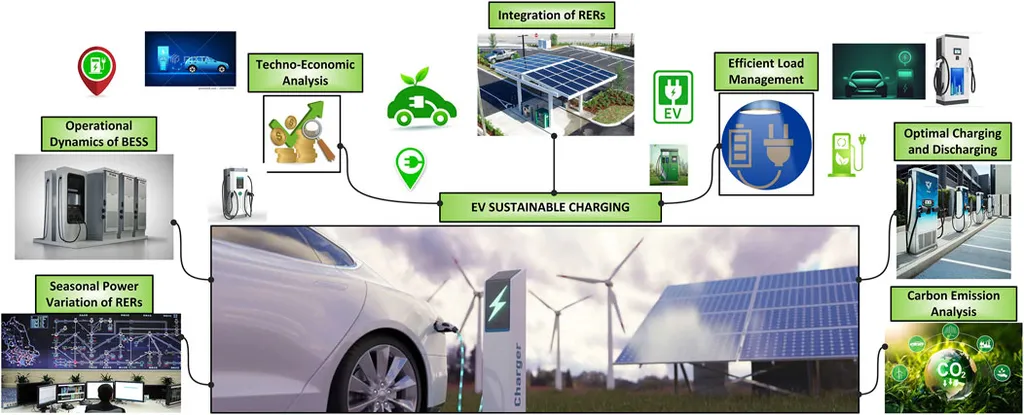In the rapidly evolving landscape of electric vehicles (EVs), a groundbreaking study led by Sigma Ray from the Department of Electrical Engineering at Siksha ‘O’ Anusandhan University in Bhubaneswar, India, is set to revolutionize how we think about EV charging infrastructure. The research, published in the journal ‘Green Energy and Intelligent Systems for Smart Mobility,’ addresses one of the most pressing challenges in the energy sector today: ensuring a reliable, economical, and environmentally friendly power supply for the burgeoning number of EVs.
As the demand for EVs surges, so does the strain on the power grid. Companies are scrambling to expand charging infrastructure, but the integration of EV charging stations into the existing distribution network is fraught with complexities. Ray’s study introduces a novel approach to this problem, leveraging a multi-objective remora optimization algorithm (MOROA) to optimize the placement and capacity of EV charging stations, photovoltaic (PV) systems, and battery energy storage systems (BESS).
The MOROA algorithm is designed to balance three critical objectives: minimizing power loss, reducing annual costs, and lowering emissions from the upstream grid. “Our goal was to create a system that not only meets the immediate needs of EV owners but also ensures long-term sustainability and reliability for the grid,” Ray explains. This multi-faceted approach is a significant departure from traditional methods, which often prioritize one objective at the expense of others.
The study’s findings, demonstrated through case studies using the IEEE 33 bus radial distribution system, show promising results. By strategically placing EV charging stations and optimizing the capacity of PV and BESS units, the algorithm can significantly reduce the overall load burden on the grid. This not only benefits the grid but also provides economic advantages for EV charging station operators and EV owners alike.
The implications of this research are far-reaching. As the EV market continues to grow, the need for efficient and sustainable charging infrastructure will become increasingly important. Ray’s work provides a roadmap for energy companies and policymakers to navigate this complex landscape, ensuring that the transition to electric mobility is smooth and beneficial for all stakeholders.
Moreover, the smart EV charge scheduling proposed in the study can help mitigate the intermittency issues associated with renewable energy sources like solar power. By optimizing the charging schedule, the system can better integrate renewable energy into the grid, further reducing reliance on fossil fuels and lowering emissions.
The energy sector is on the cusp of a significant transformation, and studies like Ray’s are paving the way for a more sustainable and efficient future. As we move towards a world powered by clean energy, the insights gained from this research will be invaluable in shaping the policies and technologies that will drive this transition. The work published in ‘Green Energy and Intelligent Systems for Smart Mobility’ is a testament to the innovative spirit of researchers like Ray, who are dedicated to creating a better, more sustainable world.

